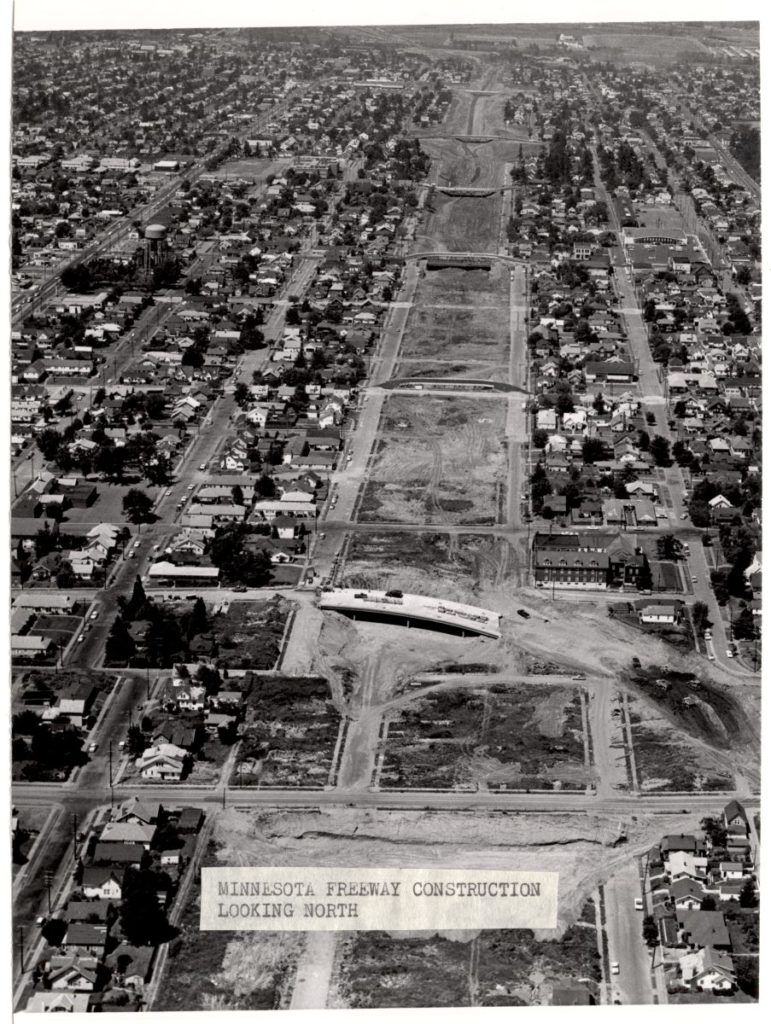Community opposition forces Oregon Department of Transportation to do a full Environmental Impact Statement on its half-billion dollar Rose Quarter freeway widening project.
For the past two years, we’ve been deeply engaged in the unfolding battle over the Oregon Department of Transportation’s proposal to spend half a billion dollars widening a mile long stretch of Interstate 5 near downtown Portland. ODOT has been pushing the project on a fast-track, aiming to use the accelerated “Environmental Assessment” process to get a finding of “no significant environmental impact” so that it can move forward quickly to construction.

A growing grassroots movement, led by the community group No More Freeways, has led an aggressive campaign against the freeway widening. It mustered more widespread opposition to the project, leading to roughly 90 percent of the more than 2,000 comments submitted on the environmental assessment opposing the a wider freeway. At City Observatory, we’ve documented numerous flaws the the Rose Quarter Freeway widening project’s environmental assessment:
- It’s based on the un-revealed assumption that the region builds the moribund $3.5 billion Columbia River Crossing project
- It proposes engineering a right-of-way wide enough to accomodate 8 traffic lanes, and falsely claims that the project doesn’t increase freeway capacity.
- It omits an analysis of legislatively mandated congestion pricing for the I-5 freeway
- And these points are just the tip of a much larger iceberg of flaws and misrepresentations; we’ve cataloged more than 25 flaws with the freeway widening proposal.
The fight over the Rose Quarter Freeway widening project has drawn national attention. CityLab called it “the freeway fight of the century.” National experts, like Robin Chase, Jeff Speck and Janette Sadik-Khan have all pointed to freeway widening as an epic betrayal of Portland’s supposedly progressive transportation and environmental values.
In early 2019, as ODOT moved forward with its Environmental Assessment, community opposition grew; BikePortland’s Jonathan Maus explains:
There was intense pressure on ODOT to more fully examine the impacts of this project. Grassroots group No More Freeways PDX led a blistering campaign that called into question many elements of the EA and their activism helped the issue garner major attention. Organizations like Albina Vision, Portland Public Schools, Oregon Environmental Council and even Metro said the agency’s analysis didn’t go far enough and raised more questions than it answered. State House Representative Karin Power, Multnomah County Commissioner Susheela Jayapal, and Portland City Commissioner Chloe Eudaly also called for an EIS.
All that push back has appeared to force the Oregon Department of Transportation to change directions. Portland alt-weekly Willamette Week reports that ODOT is not going to seek a finding of “no significant impact” and instead will prepare a full EIS for the project. This represents a major setback, although not a final defeat, for the proposed freeway widening. It’s likely to mean a one to three year delay to prepare a full-blown environmental impact statement.
State transportation officials are tight-lipped about their reasons–so far declining to confirm widespread reports that the decision has already been made to go to a full environmental impact statement. But press accounts point to strong opposition from community groups, including the Albina Vision project and Portland Public Schools (whose Harriet Tubman Middle School would be affected by the freeway widening). It’s also probable that state and federal agencies recognized that project opponents had a strong shot at prevailing in any legal challenge to the sufficiency of the Environmental Assessment.
What remains to be seen is whether the agency will take this restart as an opportunity to fully address the manifold criticisms that have been levied of the project, the analyses presented to support it, and the process the agency as followed (offering nothing other that a freeway widening or nothing). A serious EIS would look at the real challenges posed by climate change, would carefully appraise the opportunities to invest in transit, cycling and walking, and use congestion pricing to better manage freeway capacity, while promoting safety and restoring the urban environment rent asunder by freeway construction in the 1960s.
Round 1 goes to the scrappy community groups and environmental activists. But there’s little doubt that the freeway-building advocates will push forward. We’ll keep following the fight.

